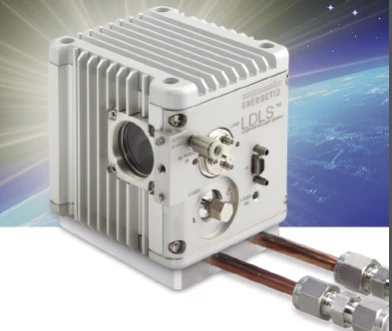EQ-99CAL LDLS Broadband High Brightness Calibration Source
Description
Traditional calibration sources for radiometric calibration, such as Deuterium, Quartz Tungsten Halogen, and Xenonarc, all have limitations in spectral range. No one source covers the full UV-Visible range from 200nm-800nm with output at comparable levels across that spectrum. In addition, traditional sources require recalibration after 100 hours or less of use and lamp replacement typically after 500 hours. With its revolutionary Laser-Driven Light Source™ (LDLS), Energetiq offers a calibration solution that addresses these limitations and provides a single, broadband, high brightness source for radiometric calibration. The EQ-99CAL combines radiometric performance with long life, longer recalibration intervals, and low cost of ownership. Calibrations made in the 350nm range are particularly challenging with Deuterium and Quartz Tungsten Halogen lamps. In the case of Deuterium lamps at 350nm, the irradiance is approximately an order of magnitude lower than its value in the deep UV at 200nm. Similarly, Quartz Tungsten Halogen lamps at 350nm are more than an order of magnitude lower in irradiance compared to their value in the visible range. Additionally, it is frequently problematic to have the two separately calibrated lamps agree at the overlapping wavelengths, adding additional uncertainty. With the LDLS, a single calibrated light source covers the whole range from 200nm to 800nm, and at 350nm exhibits an irradiance an order of magnitude higher than traditional calibrated Deuterium and Quartz Tungsten Halogen lamps.
EQ-99CAL LDLS Broadband High Brightness Calibration Source
Specifications |
|
|---|---|
| Spectral Output: | 200 – 800 nm |
| Numerical Aperture: | 0.47 |
| Typical Bulb Life: | >9000 hrs |
Features
Based on Field Proven, Laser-Driven Light Source
Technology
- Highest per formance and stability
Single Light Source Covers 200nm-800nm
- Avoids the need for multiple traditional
Deuterium/Tungsten/Xenon sources
- Strong signal in critical 350nm range
(D2/Tungsten crossover)
Long-Life Bulb – >9000 Hours Typical Life
- Low consumable cost
Long Intervals Between Calibrations
- Low drift compared to D2/Tungsten/
Xenon sources
- Low cost of ownership
Traceable Calibration
- Calibrations performed by our calibration
partner, traceable to NPL
Temperature Stabilized Lamp House
- For highly stable measurements
Applications
Light Source Spectral Radiometry
Spectral Sensitivity Measurements for Sensors, Detectors, Cameras
Manufacturing Quality Control
For pricing, technical or any other questions please contact the supplier
- No registration required
- No markups, no fees
- Direct contact with supplier
-
Ships from:
United States
-
Sold by:
-
On FindLight:
since 2017
Frequently Asked Questions
The EQ-99CAL LDLS Broadband High Brightness Calibration Source is a revolutionary Laser-Driven Light Source that provides a single, broadband, high brightness source for radiometric calibration.
Traditional calibration sources for radiometric calibration, such as Deuterium, Quartz Tungsten Halogen, and Xenonarc, all have limitations in spectral range. No one source covers the full UV-Visible range from 200nm-800nm with output at comparable levels across that spectrum.
The EQ-99CAL LDLS Broadband High Brightness Calibration Source provides a single calibrated light source that covers the whole range from 200nm to 800nm, and at 350nm exhibits an irradiance an order of magnitude higher than traditional calibrated Deuterium and Quartz Tungsten Halogen lamps. It also has a long-life bulb with >9000 hours typical life, low consumable cost, long intervals between calibrations, low drift compared to D2/Tungsten/Xenon sources, low cost of ownership, and traceable calibration.
The EQ-99CAL LDLS Broadband High Brightness Calibration Source is used for Light Source Spectral Radiometry, Spectral Sensitivity Measurements for Sensors, Detectors, Cameras, and Manufacturing Quality Control.
The EQ-99CAL LDLS Broadband High Brightness Calibration Source is different from traditional calibration sources because it provides a single, broadband, high brightness source for radiometric calibration that covers the whole range from 200nm to 800nm, and at 350nm exhibits an irradiance an order of magnitude higher than traditional calibrated Deuterium and Quartz Tungsten Halogen lamps. It also has a long-life bulb with >9000 hours typical life, low consumable cost, long intervals between calibrations, low drift compared to D2/Tungsten/Xenon sources, low cost of ownership, and traceable calibration.

